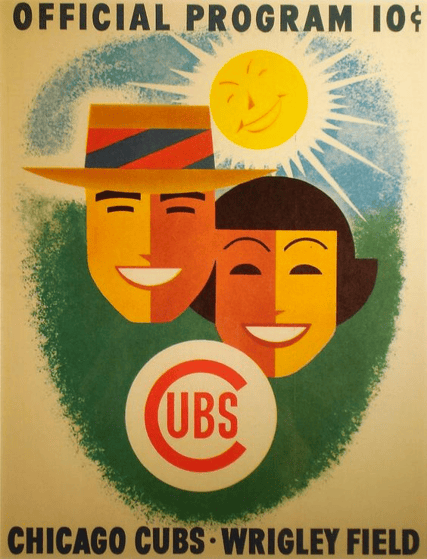3 Lessons About Digital Strategy from the Chicago Cubs
Bill Casey CEO & Partner#Events, #Digital Strategy

We look at the lessons the Chicago Cubs can provide about creating a good user experience, providing quality content, and making continual improvements.
The Chicago Cubs are playing in the World Series for the first time since 1945! This is big news here in Chicagoland, huge news, the only news. They have not won the Series since 1908, nearly twice as long as the next longest drought in baseball (belonging, oddly enough, to this year’s opponent, the Cleveland Indians). Yet despite the annual rite of futility that has defined the Cubs for multiple generations, they are still one of the biggest draws in baseball, averaging over 2.5 million in attendance for each of the last 20 years.
From a pure business perspective, delivering a superior product is seen as a necessary ingredient for success, but the Cubs organization hasn’t delivered a superior product since automobiles became the preferred method of transportation over horses. How is it possible then, that after all these years, tickets continue to be sold, when no one alive can remember a Cubs World Series victory? The answer is a key ingredient to any successful business: customer loyalty.
As Peter Drucker, the father of Business Consulting, famously said, "The purpose of business is to create and keep a customer.” The Cubs are a great example of how to cultivate a dedicated and fiercely loyal customer base to ensure business success, even when all other indicators would point to a downturn. Their success illustrates some tips any business can follow when building a digital strategy to attract, retain, and expand their audiences.
1. Provide frequent, relevant content that keeps people coming back
The Cubs provide at least 162 unique, and hopefully winning, “content items" each season in the form of baseball games. Each game has its own storyline that adds to the overall narrative of the season. Villains, heroes, drama, action, disappointment, and elation are provided day in and day out, hopefully culminating in bonus content... the postseason! Each game on its own may not be critical in the sense of its importance to the overall season, but the sum of the games is what binds the fans to the team and retains their interest. These games create the personality of the team and provide the fans with a regular touchpoint to learn more about the team’s makeup and potential for future success.
A business should also provide ongoing content to engage with their audiences and provide value. It isn’t enough to simply market a product or service without also publishing value-added content that highlights your expertise and thought leadership. Even if the content isn’t directly tied to promoting your offerings, if you are speaking to your audience and attempting to solve the issues they are concerned with, you will build a following and keep people coming back for more. This regular, top-of-mind presence is key to making sure your organization is considered when a customer is making a buying decision. If you’re not talking to your audience, chances are your audience will be talking to someone else.
2. Provide a pleasant user experience
Ask most people what they think of when they think of the Cubs and the answer is the same: Wrigley Field. This iconic ballpark has set the standard for the quintessential baseball experience in America. This is no fluke, however.
When Philip K. Wrigley, owner of the Wrigley Chewing Gum Company and the Cubs, wanted to increase flagging ticket sales when the Cubs weren’t performing well, he focused on creating a memorable “day at the park,” a fun time outdoors in the sunshine where, win or lose, the experience was a positive one. This was the genesis of planting ivy along the hard brick outfield wall, a new visual identity with bright red and blue colors and the legendary cub face logo, and even the illustrations on the daily game programs where the focus was on the fans, not the team. The purpose was simple: win or lose, create a great experience that fans loved. Even to this day, Wrigley Field has the unofficial title of the “World’s Biggest Beer Garden.” Who wouldn’t want to go there?

For businesses today, the primary way audiences experience your brand is digitally - through a website, social media, mobile apps, etc. First impressions are often made when a would-be customer researches your product or service online. That impression is defined by the ability to find what they are looking for on whatever device they’re using, how aesthetically pleasing or professional your brand appears, how quickly they are able to accomplish their research, and what sort of value you are able to provide without having to spend money or talk to a sales person.
Current technology also allows for a personalized experience where you can tailor your message to specific personas based on past visits, buying habits, and more. And direct engagement through social media creates the opportunity for your company to talk to your audience where they spend their time. Similar to the Cub’s wonderful day at the ballpark, a current or potential customer should come away with a positive impression of their digital interaction with your organization. How well you can provide that relates directly to building a comprehensive digital strategy that focuses on user experience.
3. Iterative improvement based on user analysis and feedback
When Philip Wrigley created the Wrigley Field experience, he redefined how to sell tickets without the need for a championship to get people’s attention. But left unchanged, that experience would only last for so long. The ivy in the outfield may have been a unique way to bring nature into the ballpark, but over time, it becomes just another feature people come to expect.
Therefore, the Wrigley experience continued to evolve over the years - stadium lights, luxury boxes, picnic areas, and a huge video screen in left field (although many long time fans don’t consider this an improvement at all). Fan events such as [pick your profession] appreciation nights, player meet-and-greet fantasy experiences, stadium tours, and social media outreach have been added to directly engage the fans and create memorable, personalized experiences. As time marches on and fans' perspectives and expectations change, the Cubs organization continues to improve the baseball experience and keep people coming back over and over again.
Your digital properties are no different. A website built in 2011 and largely unchanged since is going to reflect a stale, irrelevant brand that potential customers will quickly pass by. There needs to be an ongoing evaluation of users' needs and expectations and an understanding of what works and what doesn’t. When something that may have once been a driver of traffic no longer produces results, its time to change it. Being able to provide your audience with what they want, when they want it, wherever they are is no longer considered forward thinking; it's expected. That is why the concepts of website redesign or inbound marketing are not singular events that need to performed once to elevate your online presence, they are ongoing initiatives that require an iterative process of design, testing, analysis. and refinement.
Businesses and organizations would do well to follow the Chicago Cubs' example of how to win and keep customers. The Cubs have been focused on their fans for decades and have become one of the most successful professional sports teams in the US, if not in championships, then in tickets sold. Valued content, great user experience, and iterative improvement are the cornerstones to the Cubs’ success and of any organization's successful digital strategy. But a World Series victory wouldn’t hurt either.
Go Cubs!!!
Image Credit: Wrigley Field, by Tripp (CC BY 2.0). Text added to original.
Related Posts

2024 Umbraco US Festival Recap
Umbraco US Festival 2024 recap: a dynamic event on content management and digital experience trends and innovations.

4 Ways to Avoid Disaster When Migrating CMS Platforms
If you have ever migrated from one content management system (CMS) or eCommerce platform to another, you know how many unexpected issues can occur during the migration process.
Results Matter.
We design creative digital solutions that grow your business, strengthen your brand and engage your audience. Our team blends creativity with insights, analytics and technology to deliver beauty, function, accessibility and most of all, ROI. Do you have a project you want to discuss?
Like what you read?
Subscribe to our blog "Diagram Views" for the latest trends in web design, inbound marketing and mobile strategy.
